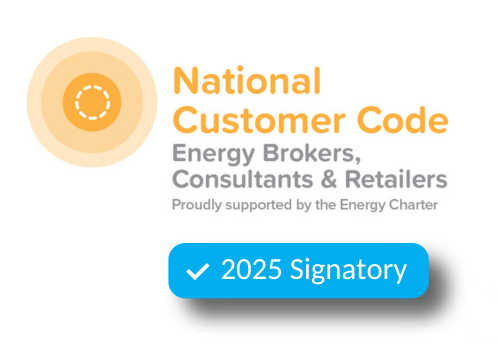
Market Commentary
All states in the National Energy Market witnessed a significant increase in both spot and wholesale futures electricity prices in April 2024, reversing the downward trend observed in the first quarter of 2024.
Over a week of low wind generation was the largest contributor to elevated spot and futures prices, along with an unplanned outage at Victoria’s Yallourn Unit 3 coinciding with Unit 1’s planned maintenance outage.
Low wind generation drives up spot and futures prices
Aggregate wind power production remained below 10.5% of the NEM grid demand for an extended period.
The proportion of wind energy in the NEM over seven days ending on 17 April averaged only 5.9%. This contrasts with the average of 10.7% over the previous 30 days and 13.1% over the past year.
The drop in output was reflected in increases in both spot and futures prices across all states.
Speculation grows over Eraring lifespan extension
There has been growing speculation in recent weeks that New South Wales will approve an extension for the Eraring facility on the Central Coast, increasing its capacity from 2.88 GW to potentially three to five years beyond its planned closure date in August 2025, as announced by its owner, Origin Energy, in early 2022.
The NSW state’s expenditure review committee is due to meet to approve government payments to Origin Energy to ensure it stays open.
It is not clear whether the new closure date is being pushed to 2028, 2029, or 2030.
This will depend on costs and final negotiations, but any extension beyond keeping a few units open for another two summers, is being speculated.
Callide C3 returns to full service
The 420MW Unit 3 at the coal-fired Callide C Power Station near Biloela in Queensland has been returned to service some 17 months after it was taken offline due to a cooling tower structural failure.
Unit C3 at Callide C was taken offline in late October 2022 after a structural failure damaged two cells at the unit’s cooling plant. It followed the dramatic fire and explosion at the C4 unit in May 2021, which led to more than 470,000 customers losing power across the state.
Six offshore wind projects granted feasibility licences
The federal government has granted feasibility licenses for six potential offshore wind projects within the nation’s inaugural offshore wind zone.
Additionally, another six projects are expected to receive licenses pending further consultations with Traditional Owners. Collectively, these 12 projects have the potential to generate up to 25GW of renewable energy capacity.
New regulations to expedite adoption of smart meters
The Australian Energy Market Commission (AEMC) has announced plans for new regulations aimed at expediting the adoption of smart meters.
This initiative comes in response to the findings of the AEMC-led review of the Regulatory Framework for Metering Services.
The review recommended a nationwide program to install smart meters in all homes and small businesses within the National Electricity Market (NEM) by 2030.
Presently, Australia’s smart meter penetration stands relatively low at approximately 30%.
Transmission line with 165 towers completed to connect Australia’s biggest wind project
Powerlink, the Queensland government-owned transmission company, has announced the completion of a new 65 km 330 kV transmission line, comprising 165 towers. This line will connect with Australia’s largest wind project in southern Queensland.
This new transmission line, which also features two switching stations, will connect the 923 MW Macintyre wind project being developed by Acciona Energia. The wind farm is set to become the country’s largest, at least temporarily.
Powerlink anticipates that the first wind turbines at Macintyre will begin feeding power into the grid in stages later this year, marking the start of the extensive testing and commissioning process.
Despite Queensland having the lowest penetration of renewable energy among states, averaging just 28% over the past year, it currently leads in approvals and construction. The state has set a target of achieving 80% renewables by 2035.
First of 2,600 battery units arrive for installation at Australia’s biggest grid shock absorber
The first batch of 2,600 battery units has arrived in Australia for installation at the Waratah Super Battery, set to become the country’s largest grid “shock absorber.”
These battery units are being transported to the project site at the now-closed Munmorah coal-fired power station in NSW.
Upon completion, the Waratah Super Battery will hold the title of Australia’s largest, boasting a capacity of 850 MW and 1680 MWh. However, this status may be short-lived as the Collie battery in Western Australia, currently under construction at another former coal-fired power station, is set to surpass it with a capacity of 500 MW and 2000 MWh.
The Waratah battery will serve as a massive “shock absorber,” leveraging its size (it’s the largest single unit connected to Australia’s main grid) and flexibility to enable main transmission lines feeding into the state’s major load centres to transport power at full capacity.
This battery is a critical addition to the grid, aiming to fill the gap left by the planned closure of the 2.88 GW Eraring coal generator in August next year, although negotiations between coal plant owner Origin and the NSW government could impact the timing of this closure.
If you require assistance with obtaining and comparing electricity or gas plans, contact our team of energy specialists now. We can help you strategise for future contracting and secure the best plan for your business. Get in touch today!
New South Wales
*The ASX has ceased to report on electricity futures prices for the year 2024. As a result, reporting now covers the years 2025, 2026, 2027
Average Movement Summary:
| Avg Rate Movement Since: | 1-Apr-2024 | 1-Mar-2024 | 1-Feb-2024 | 1-Nov-2023 | 1-May-2023 | 1-May-2022 |
| NSW – Average | ⇧ 8.08% | ⇧ 8.25% | ⇧ 3.18% | ⇩ 4.93% | ⇩ 7.68% | ⇧ 7.70% |
New South Wales electricity futures prices for 2025* started the month at $101/MWh, climbing sharply in the third week of the month to $111/MWh before retreating to close the month at $108/MWh.
Prices for 2026/27 followed the same trend but at a slightly higher cost. Prices have come down since the crisis in October 2022 and are $7/MWh cheaper than the same period last year.
Start comparing current market offers and make your procurement process a breeze. Take the first step and get started here!
Commentary:
- The volume-weighted average price on the spot market increased substantially from $70/MWh in March to $89/MWh at the end of April.
- Spot prices are higher than in March 2023, when the spot price was $110/MWh.
- April was a relatively stable month for spot prices in NSW. The highest price fetched on the market was $457/MWh. The bulk of trading took place at around the $80/MWh mark. Incidents of negative pricing numbered around 500, with a maximum low of -$52/MWh.
- Renewables share in April dropped by 3.5 percent to 31.5%. Reliance on gas decreased marginally to 1.5%. Coal contribution made up for the drop in renewables, climbing by almost 4% to 66.9%.
- Batteries remained at a contribution of 0.2% of the state’s energy at an average of $170/MWh. Gas generation traded at an average of $171/MWh. Renewables cost an average of $69/MWh, and coal $106/MWh.
Start comparing current market offers and make your procurement process a breeze. Take the first step and get started here!
Victoria
*The ASX has ceased to report on electricity futures prices for the year 2024. As a result, reporting now covers the years 2025, 2026, 2027
Average Movement Summary:
| Avg Rate Movement Since: | 1-Apr-2024 | 1-Mar-2024 | 1-Feb-2024 | 1-Nov-2023 | 1-May-2023 | 1-May-2022 |
| VIC – Average | ⇧ 10.60% | ⇧ 17.57% | ⇧ 7.32% | ⇩ 1.32% | ⇧ 1.33% | ⇧ 23.01% |
Victoria futures prices opened the month at $64/MWh (2025), climbing to $74/MWh in the third week of the month, retreating to $70/MWh to close the month. Prices for 2025 and 2026 followed the same pattern but at a shallower curve and cheaper cost.
Electricity prices have come down significantly since the crisis in October 2022 but are $2/MWh higher than the same period last year.
Start comparing current market offers and make your procurement process a breeze. Take the first step and get started here!
Commentary:
- Victorian average spot prices increased substantially from $52/MWh at the end of March to $84/MWh at the end of April 2024. Electricity spot prices are $1/MWh cheaper than in the same period for 2023.
- Although prices were higher than the previous month, Victoria experienced a relatively stable spot pricing month, with a high of 714/MWh. The bulk of trading occurred around the $80/MWh mark.
- Incidents of negative pricing dropped to around 1,000 with two lows of $110/MWh.
- The share of renewables generation dropped significantly from 37.6% to 32.3%. Conversely, coal generation increased from 61.4% to 66%. Gas generation increased from 0.8% to 1.2%.
- Battery supply accounted for 0.5% of electricity, and generation cost an average of $157/MWh. Renewables cost an average of $63/MWh, while coal cost $92/MWh and gas was at $168/MWh.
Queensland
*The ASX has ceased to report on electricity futures prices for the year 2024. As a result our reporting now covers the years 2025, 2026, 2027
Average Movement Summary:
| Avg Rate Movement Since: | 1-Apr-2024 | 1-Mar-2024 | 1-Feb-2024 | 1-Nov-2023 | 1-May-2023 | 1-May-2022 |
| QLD – Average | ⇧ 9.30% | ⇧ 10.66% | ⇧ 6.50% | ⇧ 4.61% | ⇧ 11.07% | ⇧ 32.80% |
Queensland futures electricity prices for April 2024 opened at $88 (2025), climbing to $99/MWh in a similar pattern to NSW before closing off the month slightly lower at $95/MWh. Prices for 2025 and 2026 followed the same trend but at a cheaper cost
Electricity prices have come down since the crisis in October 2022 but are $2/MWh costlier than the same period last year.
Start comparing current market offers and make your procurement process a breeze. Take the first step and get started here!
Commentary:
- Queensland electricity spot prices increased by $10/MWh over the previous month at an average of $85/MWh for April 2024. Queensland spot prices are significantly cheaper than they were in February 2023, when the average price was $109/MWh.
- Queensland also experienced a relatively stable month with the highest spot prices set at around $525/MWh. There were around 1,000 negative pricing events, with a low of -$50/MWh. The bulk of trading occurred at the $80/MWh mark.
- Renewables in Queensland have performed poorly in 2024 and a third consecutive drop from 27.5% to 26.6% was registered. Coal generation rose by 2.5% to 70% contribution. Gas generation increased from 5.2% to 6.3%.
- Batteries supplied 0.1% of the total generation. Battery energy cost $158/MWh in April. Gas averaged a cost of $130/MWh, coal $94/MWh and renewables $47/MWh.
South Australia
*The ASX has ceased to report on electricity futures prices for the year 2024. As a result, reporting now covers the years 2025, 2026, 2027
Average Movement Summary:
| Avg Rate Movement Since: | 1-Apr-2024 | 1-Mar-2024 | 1-Feb-2024 | 1-Nov-2023 | 1-May-2023 | 1-May-2022 |
| SA – Average | ⇧ 3.51% | ⇧ 5.98% | ⇩ 6.91% | ⇩ 28.67% | ⇩ 27.06% | ⇧ 48.87% |
As usual, South Australia’s wholesale futures prices displayed a different trend to other states, due to its different energy mix, of which the majority are renewables and the rest gas.
Prices started the month at $84/MWh, climbing to $88/MWh by the second week of the month. Prices plateaued and closed the month at $89/MW/h. Prices for 2025 and 2026 showed a very similar pattern but at a cheaper cost.
Prices have come down substantially since the crisis in October 2022 and are $20/MWh cheaper than last year.
Start comparing current market offers and make your procurement process a breeze. Take the first step and get started here!
Commentary:
- SA’s average electricity spot prices increased substantially from $67/MWh in March to $92/MWh in April.
- Spot prices are higher than in April 2023, when prices averaged $55/MWh.
- South Australia experienced a random high-pricing event of $9,899/MWh. The rest of the trading was relatively stable by South Australia’s volatile standards.
- Around 1,000 negative pricing incidents were recorded during April 2024. Negative electricity prices were relatively soft with a low of -$110/MWh.
- Renewables increased from 77% of total generation. Gas generation dropped from 22 percent to 19%.
- Battery dropped marginally to 0.8% and averaged a cost of $113/MWh. Gas costs an average of $133/MWh, and renewables at $62/MWh.
Depending on your business’s risk appetite, now could be a good time to secure a new energy contract.
Act now! Reach out to one of our experienced energy consultants today and gain valuable insight into the potential costs that may lie ahead. Don’t wait, take control of your energy expenses now!
We hope you have found our electricity market update for April 2024 informative and helpful. We understand that these are challenging times and we are here to support you. If you would like to delve deeper into the energy market’s previous months, you can find our monthly energy market reviews here.
Contact our team for advice on reducing electricity costs and improving your business’ energy sustainability. We are here to assist you and explore your options together.
Explainer: Why we focus on Wholesale Futures Prices
Wholesale Futures Price: This reflects what the market expects wholesale electricity spot rates to be in future periods. The offers that commercial and industrial (C&I) customers receive via Leading Edge Energy are closely correlated to wholesale prices on the ASX Energy futures market; this is why we focus on these prices in our commentary.
Spot Price: This represents how much the spot market is charging for electricity currently based on demand and supply. Spot prices go up when demand is high, and supply is tight. You can view live Spot Prices here.
You can learn more about the difference between wholesale electricity futures and spot prices in our blog section.
Disclaimer: The information in this communication is for general information purposes only. It is not intended as financial or investment advice and should not be interpreted or relied upon as such.
We source, analyse, compare and rank commercial, industrial and multisite energy quotes. Obligation Free.
Chat with one of our experienced consultants today and get the insights your business needs to help manage the risk associated with volatile electricity and natural gas markets. Our energy procurement service is obligation-free and provides a time-saving way of securing lower energy rates from our panel of fifteen energy retailers.

Get advice from our Energy Management Consultants

Krystle Will
Energy Management Consultant
Get in Touch
Feel free to call or e-mail us. Or just fill in the form below and we’ll contact you for an obligation-free discussion.
Are you ready to save on business energy costs?
Get Started
Leading Edge Energy is proud to be a signatory of the National Customer Code for Energy Brokers, Consultants and Retailers.